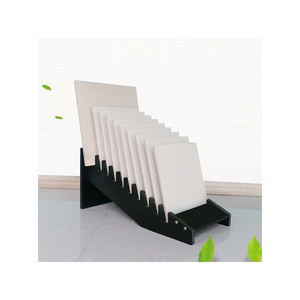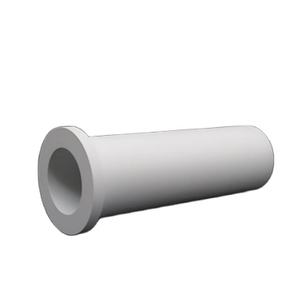Discover Premium Ceramic Products | Durability & Elegance United | Advanced Ceramics
PRODUCT PARAMETERS
Description
Introduction to Alumina Ceramics
Alumina ceramics are known for their high hardness, wear resistance, corrosion resistance, good electrical insulation and high temperature stability. According to the different alumina content, it can be divided into different grades, such as 95 porcelain, 99 porcelain, etc., among which 99 porcelain refers to ceramic materials with an alumina content of 99%. As the alumina content increases, its mechanical strength and electrical insulation properties will also increase accordingly.
Characteristics of Alumina Ceramics
High Hardness: Alumina ceramics have extremely high hardness, which makes it very wear-resistant and suitable for manufacturing abrasive tools and parts that require wear resistance.
Wear resistance: Due to its high hardness, alumina ceramics show excellent wear resistance and are suitable for manufacturing parts for long-term use.
Corrosion resistance: Alumina ceramics have good resistance to most acids and alkalis, making them widely used in the chemical industry.
Good electrical insulation: As an excellent electrical insulating material, alumina ceramics are widely used in electronic and electrical products.
High temperature stability: Ability to withstand extremely high temperatures without significant physical or chemical changes, which makes it an ideal choice for applications in high temperature environments.
Biocompatibility: In the medical field, certain grades of alumina ceramics are used to make medical devices such as artificial joints due to their good biocompatibility.

(Customized Porosity and Pore Diameter Alumina Porous Ceramic Disc)
Specifications of Customized Porosity and Pore Diameter Alumina Porous Ceramic Disc
Customized porosity and pore diameter alumina permeable ceramic discs are crafted for exact control over material structure. These discs fit applications calling for customized purification, gas diffusion, or fluid circulation. The base product is high-purity alumina, ensuring strong resistance to warmth, corrosion, and wear. Trick specifications consist of flexible porosity levels from 30% to 70%, with pore sizes ranging between 0.1 microns and 200 microns. This flexibility enables individuals to match the disc’s efficiency to certain operational needs.
Production involves sophisticated molding and sintering techniques. Raw alumina powder is combined with pore-forming representatives. The mixture is pressed into disc shapes under regulated stress. High-temperature shooting gets rid of additives, producing interconnected pores. Changing the kind and amount of pore-forming agents directly impacts last porosity and pore size. Each batch undergoes rigorous testing. Measurements include mercury invasion porosimetry for pore distribution and gas permeability examinations for circulation effectiveness.
These discs handle extreme environments. Optimum running temperature gets to 1600 ° C. Chemical stability stays undamaged in acidic or alkaline conditions. Mechanical stamina is maintained under duplicated thermal cycling. Surface finish choices consist of smooth or distinctive faces, relying on application demands. Requirement disc sizes range from 10 mm to 500 mm, with thicknesses between 3 mm and 50 mm. Non-standard sizes are offered upon demand.
Applications cover multiple sectors. Examples consist of molten metal filtering in foundries, driver supports in chemical reactors, and water therapy membranes. Biomedical tools use submicron pores for bacterial filtration. Fuel cell systems rely on consistent gas diffusion through accurate pore frameworks. Custom shapes or installing functions like threaded holes or flanged edges are sustained.
Efficiency information is provided with each order. Documents includes pore size circulation graphes, porosity certifications, and thermal growth coefficients. Bulk orders receive discounted prices. Samples are offered for evaluating compatibility. Lead times differ from two weeks for conventional layouts to six weeks for complex modifications. Technical assistance helps in selecting optimum parameters for target applications.

(Customized Porosity and Pore Diameter Alumina Porous Ceramic Disc)
Applications of Customized Porosity and Pore Diameter Alumina Porous Ceramic Disc
Alumina permeable ceramic discs with flexible porosity and pore dimensions offer multiple functions throughout markets. These items are made from high-purity light weight aluminum oxide. Their structure permits exact control over pore dimensions. This makes them perfect for tasks requiring discerning filtration.
In industrial settings, these discs filter fluids and gases. They remove contaminations from chemicals. Their heat resistance fits them for high-temperature processes. They manage destructive materials without damaging down. Producers use them in catalyst supports. The permeable structure enhances surface area for reactions.
The biomedical area uses these ceramics for implants. Their pores permit bone cells to become the product. This develops stronger bonds in prosthetics. Researchers also apply them in medicine distribution systems. Managed pore dimensions handle the release rate of medicines.
Energy manufacturing take advantage of these discs as well. They act as separators in fuel cells. Their pores control ion flow in between electrodes. This improves power efficiency. Batteries utilize them to prevent short circuits. They allow ions pass while blocking conductive particles.
Environmental applications include water treatment. The discs filter hefty steels and pollutants. Their sturdiness reduces replacement frequency. Air filtration systems utilize them to trap penalty particles. Customized pore sizes target certain toxins.
Electronics manufacturing relies upon these ceramics for insulation. Their thermal stability secures components from overheating. Permeable layers in sensors enhance reaction times. Gases or liquids interact faster with picking up components.
Custom-made porosity allows adjustment to one-of-a-kind needs. Adjustments in manufacturing change pore density and dimension. This flexibility supports specialized research. Labs make use of customized discs for experiments in nanotechnology.
The material’s chemical inertness ensures long-lasting efficiency. It stands up to responses with acids or antacid. Mechanical strength avoids fractures under stress. These traits decrease maintenance costs.
Alumina permeable porcelains satisfy needs throughout sectors. Their design equilibriums purification performance with structural integrity. Versatility makes them a sensible choice for advancing technologies.
Company Introduction
Advanced Ceramics founded on October 17, 2014, is a high-tech enterprise committed to the research and development, production, processing, sales and technical services of ceramic relative materials and products.. Since its establishment in 2014, the company has been committed to providing customers with the best products and services, and has become a leader in the industry through continuous technological innovation and strict quality management.
Our products includes but not limited to Silicon carbide ceramic products, Boron Carbide Ceramic Products, Boron Nitride Ceramic Products, Silicon Carbide Ceramic Products, Silicon Nitride Ceramic Products, Zirconium Dioxide Ceramic Products, Quartz Products, etc. Please feel free to contact us.(nanotrun@yahoo.com)

Payment Methods
T/T, Western Union, Paypal, Credit Card etc.
Shipment Methods
By air, by sea, by express, as customers request.

5 FAQs of Customized Porosity and Pore Diameter Alumina Porous Ceramic Disc
What is customized porosity in alumina porous ceramic discs?
Customized porosity means adjusting the number and size of tiny holes in the ceramic disc. This is done during manufacturing. The goal is to match specific needs for filtration, airflow, or fluid control. Different applications require different hole structures. Users can request discs with higher or lower porosity based on their project.
How is pore diameter controlled in these discs?
Pore diameter is controlled by changing the materials and processes used. Manufacturers select raw materials with specific particle sizes. They adjust heating temperatures and pressing methods. This creates pores of exact widths. Precise control ensures the disc performs reliably in tasks like filtering particles or gas diffusion.
What applications suit alumina porous ceramic discs?
These discs work in harsh environments. They handle high temperatures, chemicals, and pressure. Common uses include metal melt filtration, fuel cell components, and water treatment systems. The discs also serve as support layers in catalytic reactions. Their durability makes them ideal for industrial settings.
Can these discs withstand extreme temperatures?
Yes. Alumina ceramic material resists heat up to 1600°C. The structure stays stable even during rapid temperature changes. This makes the discs suitable for furnaces, exhaust systems, and high-heat processing. The material does not warp or crack under thermal stress.
How long do alumina porous ceramic discs last?
The lifespan depends on operating conditions. The discs resist wear, corrosion, and chemical damage. With proper use, they last years without needing replacement. Regular cleaning prevents clogging. Avoiding physical impacts or sudden pressure changes also extends their life.

(Customized Porosity and Pore Diameter Alumina Porous Ceramic Disc)
REQUEST A QUOTE
RELATED PRODUCTS
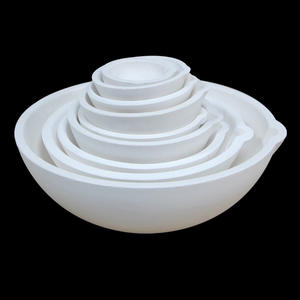
Custom Precision CNC Machined Molding Al2O3 Aluminum Oxide Zro2 Alumina Ceramic Zirconia Components for Electronic Industry
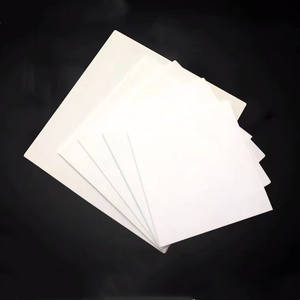
Ceramic Custom OD2mm 99% Alumina Ceramic Rod

Bare Al2O3 Aluminum Oxide Circuit Board Pink Alumina Ceramic Substrate
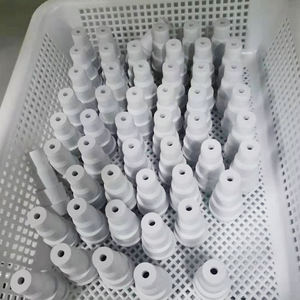
Wear Resistance Al2o3 Ceramic Tube 99 Alumina Ceramic Tube with Flange Edge
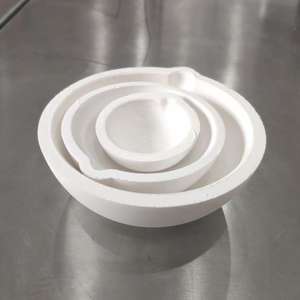
Heat Resistance Technical High Purity Aluminum Oxide Ceramic Setter Plates
